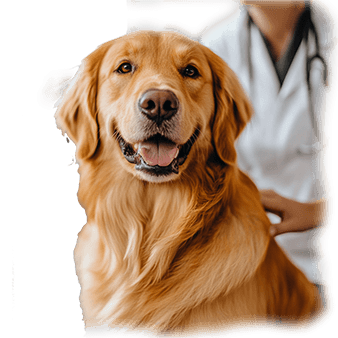Labrador Retriever Health: A Comprehensive Guide
Labrador Retrievers are among the most popular dog breeds worldwide, known for their friendly temperament, intelligence, and versatility. Whether as a family pet, service dog, or working dog, Labradors bring joy to countless households. However, like any breed, they are predisposed to certain health issues that owners should be aware of. Understanding these common conditions and taking preventive steps can ensure your Labrador leads a long, happy, and healthy life.
Hip and Elbow Dysplasia
Labradors are prone to hip dysplasia and elbow dysplasia, two genetic conditions that affect the joints and lead to arthritis and mobility issues over time.
What Is Hip and Elbow Dysplasia?
Hip dysplasia occurs when the hip joint doesn’t develop properly, leading to looseness and eventual degeneration of the joint. Elbow dysplasia is a similar condition, but it affects the front limbs. Both conditions can cause pain, limping, and difficulty getting up or walking.
Signs to Watch For:
- Difficulty standing up, especially after rest.
- Limping or stiffness, particularly in the hind legs (hip dysplasia).
- Limping or stiffness in the front legs (elbow dysplasia).
- Reduced interest in physical activities.
- Difficulty climbing stairs or jumping.
Preventive Tips:
- Maintain a Healthy Weight – Excess weight puts extra stress on the joints, making the condition worse. Feed your Labrador a balanced diet and control portion sizes.
- Regular, Low-Impact Exercise – Regular physical activity is important for joint health. However, avoid high-impact activities like jumping or running on hard surfaces. Swimming is an excellent, low-impact exercise that’s perfect for Labradors.
- Provide Joint Supplements – Talk to your vet about adding joint supplements like glucosamine and chondroitin (Amazon affiliate link) to your Labrador’s diet. These can help maintain joint health and reduce inflammation.
- Routine Vet Visits – Regular veterinary check-ups can help detect early signs of hip or elbow dysplasia, allowing for early intervention.
Treatment Options
- For mild cases, weight management, physical therapy, and joint supplements may help slow the progression of the disease.
- For severe cases, surgical intervention (such as total hip replacement or elbow surgery) may be necessary.

Obesity
Labradors love to eat, which makes them prone to obesity if their diet and exercise aren’t properly managed. Obesity can lead to a host of other health problems, including joint issues, heart disease, diabetes, and a shortened lifespan.
Signs Your Labrador May Be Overweight
- Ribs are difficult to feel under the skin.
- Noticeable fat deposits over the lower back and tail.
- Lack of a waistline when viewed from above.
- Reduced energy or reluctance to exercise.
Preventive Tips
- Portion Control – Avoid free-feeding your Labrador. Instead, measure their food portions according to their size and activity level. Your vet can recommend the appropriate amount based on your dog’s weight and age.
- Limit Treats – Treats should be given sparingly, as they can quickly add up in calories. Choose low-calorie treats or even healthy alternatives like carrot sticks.
- Regular Exercise – Labradors are high-energy dogs that need daily exercise. Aim for at least 30 to 60 minutes of exercise per day, which can include walks, playtime, and swimming.

Treatment Options for Obesity
- Dietary Adjustments – Switch to a weight management dog food (Amazon affiliate link) formulated for overweight dogs. These diets are lower in calories but high in nutrients.
- Exercise Routine – Gradually increase your dog’s physical activity to help them lose weight.
- Vet-Supervised Weight Loss – In some cases, your vet may recommend a supervised weight-loss plan, which includes regular check-ins and weight monitoring.
Ear Infections
Due to their floppy ears, Labradors are prone to ear infections. Moisture, dirt, and bacteria can get trapped in the ear canal, leading to inflammation and infection.
Signs of an Ear Infection
- Frequent head shaking or tilting.
- Scratching at the ears.
- Redness or swelling in the ear canal.
- Foul odor from the ears.
- Discharge from the ears.
Preventive Tips:
- Regular Ear Cleaning – Clean your Labrador’s ears weekly using a vet-recommended ear cleaner (Amazon affiliate link). Make sure to gently wipe the outer ear without inserting anything deep into the ear canal.
- Dry Ears After Swimming or Bathing – Since Labradors love the water, it’s important to dry their ears thoroughly after swimming or bathing to prevent moisture buildup.
Treatment Options
- If an ear infection occurs, your vet will likely prescribe antibiotic ear drops and/or an anti-inflammatory medication. Regular cleaning and monitoring can help prevent future infections.
Bloat (Gastric Dilatation-Volvulus)
Bloat is a life-threatening condition that can affect Labradors. It occurs when the stomach fills with gas and twists, cutting off blood flow. Bloat requires immediate veterinary attention and can be fatal if not treated quickly.
Signs of Bloat
- Restlessness and discomfort.
- Swollen, hard abdomen.
- Attempting to vomit, but nothing comes out.
- Drooling excessively.
- Rapid breathing or panting.
Preventive Tips
- Feed Smaller, More Frequent Meals – Instead of feeding one large meal, split your dog’s daily food intake into two or three smaller meals.
- Avoid Exercise After Eating – Wait at least an hour after meals before allowing your dog to exercise.
- Use a Slow Feeder Bowl (Amazon affiliate link) – These bowls encourage your dog to eat slowly, which reduces the risk of swallowing air (a contributing factor to bloat).
Treatment Options
- Bloat requires immediate surgery to untwist the stomach and relieve the pressure. In some cases, the vet may also perform a procedure called gastropexy to prevent future episodes of bloat.
Exercise and Activity Levels
Labradors are naturally energetic dogs, and maintaining an active lifestyle is essential for their overall health.
Exercise Recommendations
- Daily Walks – Aim for at least 30 minutes to an hour of walking per day to keep your Labrador physically fit and mentally stimulated.
- Swimming – As natural swimmers, Labradors love water activities. Swimming is a low-impact exercise that’s easy on the joints, making it a great option for Labradors prone to hip or elbow dysplasia.
- Fetch and Play – Engage in interactive games like fetch, which allows your dog to burn energy while strengthening their muscles.

Mental Stimulation
- Labradors are highly intelligent, so it’s important to provide mental challenges in addition to physical activity. Use puzzle toys, training sessions, and hide-and-seek games to keep their minds sharp.
Preventive Health Care
Routine preventive care is essential for keeping your Labrador healthy. This includes vaccinations, flea and tick preventatives, and regular check-ups with your vet.
Vaccinations
- Ensure your Labrador is up-to-date on all core vaccinations, including rabies, distemper, parvovirus, and leptospirosis. Your vet can also recommend additional vaccines based on your dog’s lifestyle and environment.
Parasite Prevention
- Use a year-round flea, tick, and heartworm preventative to protect your dog from parasites that can cause serious health issues.
Dental Care
- Brush your Labrador’s teeth regularly to prevent plaque buildup and gum disease. Dental chews and toys designed for oral health can also help.
When to See a Vet
Be sure to consult your veterinarian if your Labrador shows any of the following signs:
- Lethargy or sudden lack of energy.
- Changes in appetite or weight.
- Vomiting, diarrhea, or changes in stool.
- Difficulty breathing or coughing.
- Limping or signs of joint pain.
- Changes in behavior or signs of distress.
Conclusion
Labrador Retrievers are loving, energetic dogs that thrive with proper care. By staying proactive with regular vet visits, maintaining a healthy weight, and watching for common health issues like hip dysplasia, obesity, ear infections, and bloat, you can help your Labrador lead a long, healthy life. Always consult your vet with any concerns, and keep up with preventive care to ensure your Lab stays happy and active for years to come.
Further reading: “The Complete Guide to Labrador Retrievers: Selecting, Raising, Training, Feeding, and Loving Your New Lab from Puppy to Old-Age” (Amazon affiliate link) by Joanna de Klerk.
Affiliate Disclosure
This post may contain affiliate links, which means I earn from purchases made through links. Please see the privacy policy page for more details.






